Autumn is the best time of year for reading, and I ushered in the season with a host of excellent books. Over the past four weeks, I read some books that stretched me to think in new ways, and others that featured mediocre writing but put a smile on my face. I even read a few books that I know will be forever-favorites.
One downside to reading so much in a single month is that these Quick Lit posts can become a bit unwieldy. I thought about streamlining things by sharing only the books I loved, or by dividing the wrap-up into two separate posts, but in the end I decided to share all of my books in one spot. So grab a cup of coffee, make yourself comfy, and settle in for a nice, long read. Or, if you’d rather simply skim my reviews and focus in on the books that interest you, go right ahead; I won’t be offended (and it’s exactly what I would do, too!).
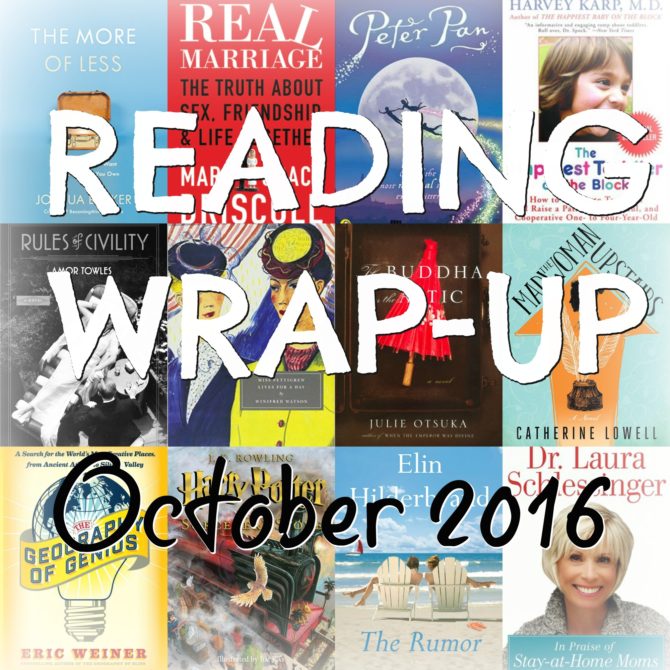
Peter Pan, by J.M. Barrie: Like everyone else in our generation, I have Walt Disney to thank for my basic familiarity with many fairy tales and older pieces of children’s literature. I realize that the versions we all grew up with are usually quite different from the traditional tales, and I find it interesting (and sometimes disappointing) to read these stories in their original format.
To be honest, I didn’t love Peter Pan as much as I hoped I would. The casual narrative style was not to my taste, and I had trouble getting into the story. I was also shocked by some of the adultish language themes. But I had fun making comparisons with the movie (the two are remarkably similar) and I enjoyed analyzing the deeper metaphors and ideas within the book.
My Rating: 3.5 stars.
The More of Less: Finding the Life You Want Under Everything You Own, by Joshua Becker: Minimalism is quite trendy right now; the weakened economy (which has forced us all to cut back), combined with a growing awareness of the excessiveness of previous generations, is sparking in many of us a desire for less. I am not immune to this trend: I see its merits and have made some big strides towards living with less. It’s a continuous effort to keep consumerism at bay, so I regularly listen to podcasts and read books about the subject to help counteract the lure of materialism.
The theme of The More of Less might not be original, but I loved its unique presentation of familiar ideas. Joshua Becker is passionate about his subject but he is not dogmatic, and he offers his suggestions with a gracious spirit and a mind toward practicality. The book has a healthy balance of principles and application, offering effective strategies for decluttering as well as motivating reasons for doing so and suggestions for how to spend our time and resources when our lives become clutter-free. These ideas are accompanied by inspiring stories from Becker’s own family and other minimalists within his community.
Unlike most minimalist resources I’ve read, this one approaches the subject from a Christian perspective. I appreciated Becker’s inclusion of scripture and found his faith-driven approach much more compelling than that taken by secular minimalists. I particularly liked his thoughts on how reducing our possessions can help us live out our faith to its fullest extent.
My Rating: 4.5 stars.
Real Marriage: The Truth About Sex, Friendship, and Life Together, by Mark and Grace Driscoll: Many Christian books have been written about marriage—and I’ve read a lot of them—but few are as honest or explicit as this one! In Real Marriage, pastor Mark Driscoll and his wife Grace rely heavily on Scripture as well as their own experiences to outline God’s plan for marriage. In addition to recounting stories from members in their congregation, the Driscolls share candidly about how they personally have overcome painful sexual sin to create the healthy relationship they share today. The final, most controversial section of the book contains a deep (and sometimes uncomfortably graphic) dive into what is and isn’t healthy within a committed Christian marriage.
Mark Driscoll is a very polarizing figure. (To be honest, it’s the controversy surrounding him that piqued my interest in this book.) I know few details about his history, but after reading Real Marriage I can understand why many have a problem with him. His frankness about certain issues is likely off-putting to extremely traditional Christians, yet his stance on marriage, sexuality, and gender roles is rigidly conservative. I found myself agreeing with much of his theology and beliefs, but some parts of the book rubbed me the wrong way. At first I attributed this inner rankling to the feminist ideology so prevalent in our culture (a framework that I’ve gradually started aligning with myself.) However, in thinking more about the material Driscoll presents, I realized it wasn’t only the ideas themselves that bothered me, but the way they were presented. Driscoll’s tone is at times arrogant, dogmatic, and bordering on misogynistic, and his wife comes across as a bit of a doormat for his authoritarian behavior.
These thoughts aside, I found the book insightful and useful. My only other qualm was the fact that the audiobook is not read by the authors—a pet peeve of mine, especially when the narrators’ voices are quite distinct from the authors’ own voices. These caveats aside, it was a very worthwhile read.
My Rating: 4 stars.
The Rumor, by Elin Hilderbrand: Madeline and Grace are best friends living seemingly idyllic lives in Nantucket. But their world—and their friendship—turns sour when Madeline starts sleeping with her gardener, and Grace (an author) begins detailing the affair in her latest novel. Meanwhile, Grace’s husband Eddie is trying to save the family from dire financial straights by involving himself in a prostitution ring, and the women’s teenage children face drama of their own. Rumors abound on the island, and it can be difficult to sort fact from fiction, but there’s no denying that these two friends are headed for trouble.
I won’t pretend that this book is anything other than a breezy (bordering-on-trashy) beach read. But for mindless chick lit, it’s not half bad. The story is readable—on verge of being un-put-downable, actually—and though I didn’t like most of the characters, they each had their redeeming qualities. The ending is predictable but satisfying, and the author’s self-referential nods to the publishing business add a nice touch.
My Rating: 3.5 stars.
The Happiest Toddler on the Block: How to Eliminate Tantrums and Raise a Patient, Respectful, and Cooperative One- to Four-Year-Old, by Harvey Karp: If I’ve learned anything in the past few months, it’s that parenting a toddler is not easy! There are plenty of wonderful moments but those tougher times are. . . well, let’s just say they’re pretty tough. I learned so much from Janet Lansbury’s book but was left wanting some more practical tips. Since I loved Dr. Karp’s Happiest Baby on the Block, this seemed like the next logical parenting book to try.
This was a quick read and I have very mixed feelings. Let’s start with what I liked: Dr. Karp’s explanations of why toddlers behave as they do was helpful and easy to understand. He offers lots of very great strategies for promoting good behaviors and curbing negative ones, with detailed instructions and examples of how they can be implemented. I liked the repetition and the highlighted key points at the beginning of each chapter.
Now for what I didn’t like: by the end, I found the book was getting TOO repetitious. It was nice to see the main points reiterated but I found myself skimming quite a bit in the last chapters. (This wouldn’t have been as big of a deal if I were reading a physical copy and not the eBook). Some of the formatting was confusing (also likely because I was reading an eBook; I assume much of the material is divided into sidebars and differentiated sections in the physical book). My biggest problem with the book was the tone: Dr. Karp repeatedly compares toddlers to cavemen, and while the metaphor might be fitting, it comes across as demeaning, as do many of his tactics. (For instance, I don’t like the idea of tricking my child, which Dr. Karp frequently suggests.)
As for the disciplinary tools themselves? A lot are common sense ideas we have already been using, such as showing empathy or using time outs. Other tactics are pretty bizarre and even uncomfortable (like growling at your toddler to stop a behavior, or talking in caveman-like abbreviated sentences so your toddler can understand). We’ve been giving these unusual tactics a shot and so far they haven’t been very effective, but we will keep at it; I feel silly using them but if they actually work I’m willing to play the fool.
My Rating: 3.5 stars.
The Madwoman Upstairs, by Catherine Lowell: I’ve had a library hold on this book since its release, and was giddy when it finally popped up on my OverDrive. I just love books about books, especially when they revolve around personal favorites. Jane Eyre has been in my Top 5 since I read it as a high school sophomore, so a book that pays tribute to the Brontë sisters drew me in like a moth to flame.
Samantha Whipple is the last remaining descendant of the Brontë family. Years after the unexpected death of her eccentric father, Samantha enrolls at Oxford University and is launched into a literary scavenger hunt designed by her father. Prompted by a desire to reconnect with her dad, and aided by her recalcitrant but handsome professor, Samantha follows the clues that she hopes will lead to the long-rumored secret Brontë estate.
A deeper knowledge of the Brontë family history would have enhanced my appreciation for this novel, but even without knowing much beyond the content of their novels, I found The Madwoman Upstairs to be a delightful and creative read. The mystery itself was somewhat lacking, but I adored the character of Samantha, whose backstory somewhat mirrored that of Charlotte Brontë and whose narration was reminiscent of Jane Eyre’s. I particularly enjoyed the dynamic and banter between Samantha and her professor.
I came away from this novel with a strong urge to reread all of the Brontë sisters’ books! I have no idea whether there is any truth to the Brontë conspiracies hinted at in The Madwoman Upstairs but I know I’ll never read a Brontë book the same way again!
My Rating: 4 stars.
The Buddha in the Attic, by Julie Otsuka: This short novel tells the haunting story of Japanese “picture brides” who were brought to San Francisco in the early 1900s. The book follows their arduous journey across the ocean, their often-tortuous lives with their new husbands, the cultural and racial challenges they face in their new home, and eventually their removal to internment camps following World War II.
The book is told in the plural first person. This unusual device serves various purposes: it allows the author to share multiple stories, demonstrating the range of experiences these women faced. It also renders the protagonists nameless and faceless, dehumanizing them in a manner that echoes the real-life anonymity the women might have felt. Unfortunately, the repetitive “Some of us…” and “one of us…” narrative grew tedious after the first chapter and had me feeling like I was reading an encyclopedia article rather than a novel. I would have appreciated the chance to get to know a few of the characters at a more personal level.
This is an enlightening novel about a class of individuals and a period in history that is infrequently explored in literature. I am so glad I read this book, but was left wanting more than Otsuka and her brides delivered.
My Rating: 3.5 stars.
Harry Potter and the Sorcerer’s Stone, by J.K. Rowling: I remember the very first time I read this book: I was a Junior in high school and all of my friends were talking about how much they loved Harry Potter. Not being a lover of fantasy, I was reluctant to give the books a try, but a friend forced her copy of The Sorcerer’s Stone into my hands and wouldn’t take it back until I’d given the book a fair chance. The novel sat on my desk at home for months until I finally picked it up—and after that, I couldn’t put it down! I devoured The Sorcerer’s Stone, and then plowed my way through the rest of the series, reading each new installment as soon as it was released.
I have read the series several times since, and the books never get old. When I learned of the popular new Harry Potter podcast, I decided it was time for me to revisit the texts myself. I plan to read the series one chapter per week to keep on track with the podcast discussions, but since I came to the show a few months late, I got to read all of Book 1 over the span of just a few days.
I’ve read Sorcerer’s Stone at least four times (perhaps more), but I seem to glean something new with each reading. I am continually amazed by the genius of J. K. Rowling. She has created such a masterful world that appeals to all ages but is also deep with meaning and insight. Sorcerer’s Stone has always been my favorite book of the series—for its innocence and the sheer joy of joining Harry as he discovers the magical world for the first time—and this reading was particularly enjoyable thanks to the enrichment of the Harry Potter podcast.
In the past I’ve read the HP books in paperback and ebook, and I’ve also listened to the delightful audiobooks, but for this time through, I read the beautiful illustrated version. I love that this recent edition features the British version of the text, and the illustrations are nothing short of magical. I look forward to collecting the illustrated editions of the other books in the series as they are released.
My Rating: 5 Stars (was there any question?)
In Praise of Stay-at-Home Moms, by Dr. Laura Schlessinger: My mom stayed home with my brother and me when we were growing up. It was one of the greatest gifts she and my dad could have given to us, and I always knew I wanted to do the same for my own children one day. Fast forward to today, when I am indeed living my dream of staying at home with my child. It is wonderful, but it can also be a challenging and sometimes thankless job. Lately I’ve been listening to the lie that says my life lacks meaning and purpose because I am choosing to stay at home with Charleston. (For the record, Luke has NEVER said or done anything to fuel this line of thinking, and he has been my biggest supporter in my role as a SAHM).
In my discouragement, I turned to the wisdom of one of my role models, Dr. Laura Schlesinger. As a long-time fan of Dr. Laura’s radio show, I had a good idea of what to expect from this book and knew it would provide just the pick-me-up I needed. In Praise of Stay-at-Home Moms is filled with solid reasons why a mom’s decision to stay home with her kids is so crucial. Dr. Laura shares uplifting stories of other SAHMS and recounts the numerous reasons why she is so glad she chose to stay home with her own son. She also admonishes SAHMS against feeling resentment about our roles and reminds us to take pride in our job as Mom.
I didn’t love the book’s biting tone (which has always been my one qualm with Dr. Laura), and I disagree with her harsh stance against working moms: though that is not the route our family has taken, I would never presume that moms who have chosen a different path are failing to do what is best for their own families. However, Dr. Laura’s words were exactly what I needed to hear at this point in my life. I came away from the book feeling validated for my decisions and encouraged in my role as a SAHM. Dr. Laura has given me a much-needed attitude adjustment and reminded me of what a blessing it is for Charlie, Luke AND me that I get to stay home. This is a must read for every woman who is proud (or even not so proud) to be a Stay at Home Mom!
My Rating: 4.5 stars.
Rules of Civility, by Amor Towles: Every once in a while I come across a book that has it all: exquisite prose; compelling story; engaging characters; thought-provoking themes. . . . Rules of Civility is one such book.
The novel begins in 1966 at a New York art exhibit, where a photograph of an old acquaintance transports the narrator back to 1937—a year that proved to be pivotal in her life. The book follows 25-year-old Katie Kontent as she makes one convenient acquaintance after another, moving her way from working class daughter of Russian immigrants into the upper echelons of New York society. Katie endears herself to a colorful assortment of characters as she forges into new careers and carves out a new and exhilarating social life.
Reading this book felt like observing a complex and beautiful mural. There were many striking vignettes (passages of witty banter, stimulating reflection, cultural dives into other literary works [Agatha Christie!]) that captured my attention; as stand-alones, each of these elements is worthy of admiration. But as I step back to reflect on the mural/book as a whole, I am even more amazed. It all comes together so perfectly, and even after closing the book I am left in awe of Towle’s masterpiece. I know I will still be thinking about this story for years to come. Easily one of my favorites books of the year.
My Rating: 5 stars.
** Throughout the novel I could not stop making comparisons to the show How I Met Your Mother; from the New York setting to the time traveling story structure, Rules of Civility felt like HIMYM set seventy years in the past. For those familiar with both the show and this book, did your mind jump to this comparison too? **
Miss Pettigrew Lives for a Day, by Winnifred Watson: I read this as my “book that was made into a movie” for my 2016 Reading Challenge, so you’ll have to wait for my next RC post for my full review on this one! For now, all I will say was that I loved it and you should immediately get your hands on a copy because I know you will too!
My Rating: 4.5 stars.
The Geography of Genius: A Search for the World’s Most Creative Places from Ancient Athens to Silicon Valley, by Eric Weiner: I heard Eric Weiner discussing this book on The Portfolio Life podcast and knew I needed to read it. Equal parts travelogue, history, and philosophy, The Geography of Genius explores seven of the world’s most creative places and identifies elements within these innovation hotspots that made them so conducive to the flourishing of genius. Weiner takes us to some expected places, such as Ancient Athens and Florence during Italian Renaissance, but we also visit some lesser known golden ages of creativity, such as Hangzhou, China, during the Song Dynasty, and the golden age of Edinburgh, Scotland.
Weiner’s narrative is thoughtful, humorous, and engaging, bringing his readers along a journey through geography and ideas and opening our eyes to new places and ways of thinking. I enjoyed his reflective insights just as much as the historical factoids that are scattered like gemstones throughout the book. With broad implications for cultivating personal creativity, this book pairs beautifully with Elizabeth Gilbert’s Big Magic.
My Rating: 4 stars.
I’m linking up with Anne Bogel to share what we’ve been reading lately. I love the bookish community Anne has created on Modern Mrs. Darcy; she is truly a Book Whisperer, and the readers that gather at her site are true kindred spirits.

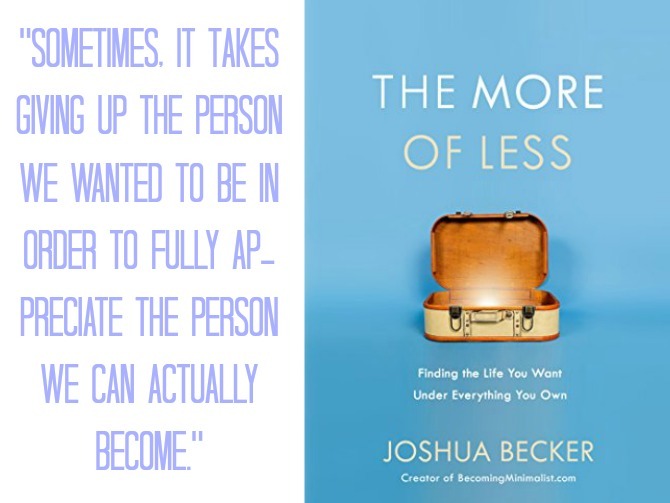
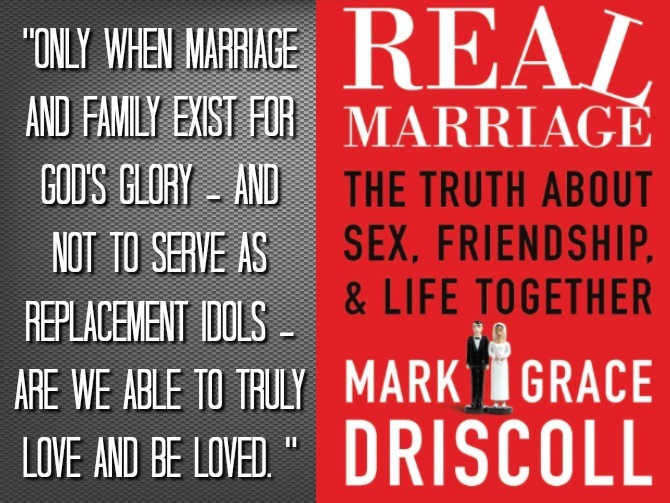
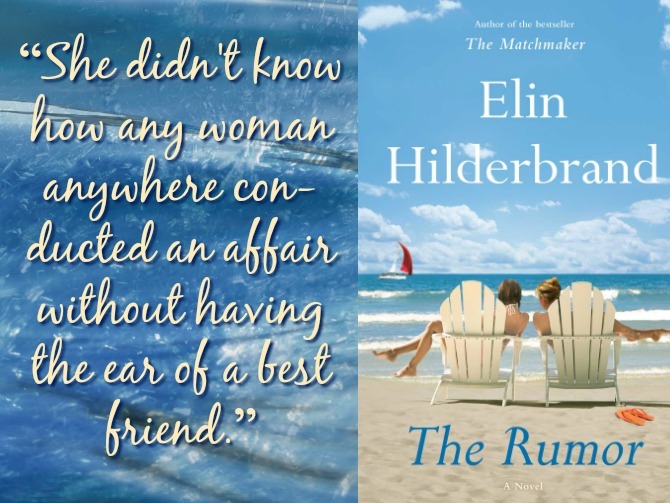
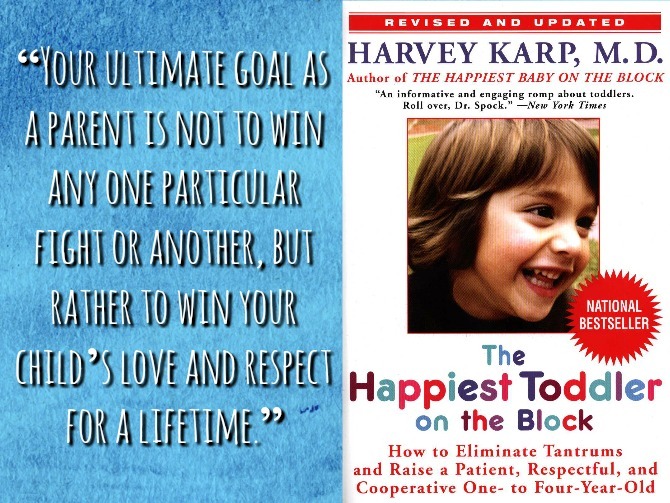
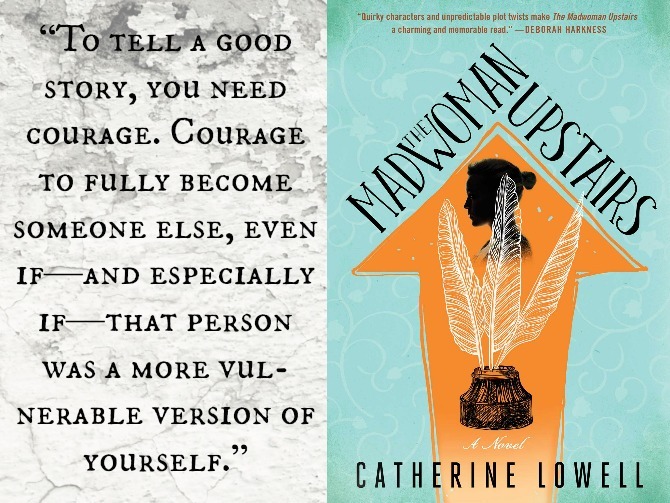
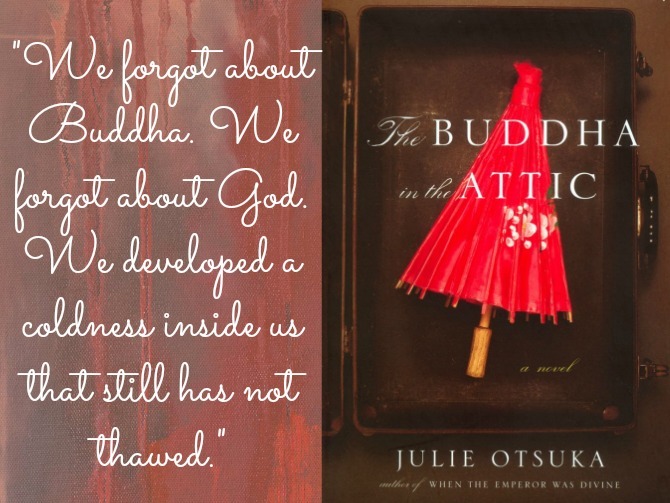
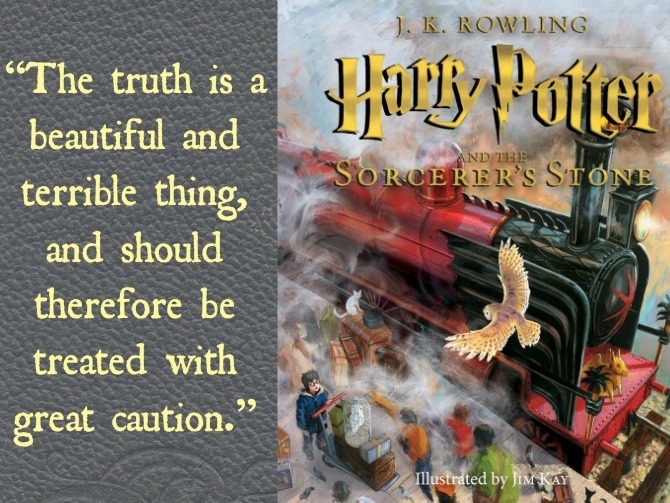
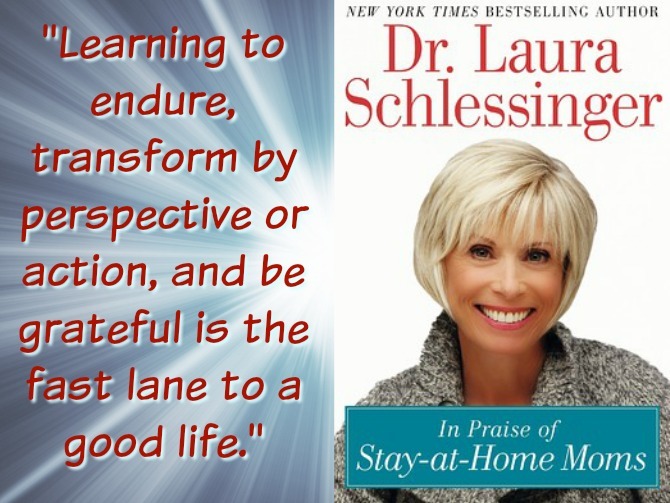
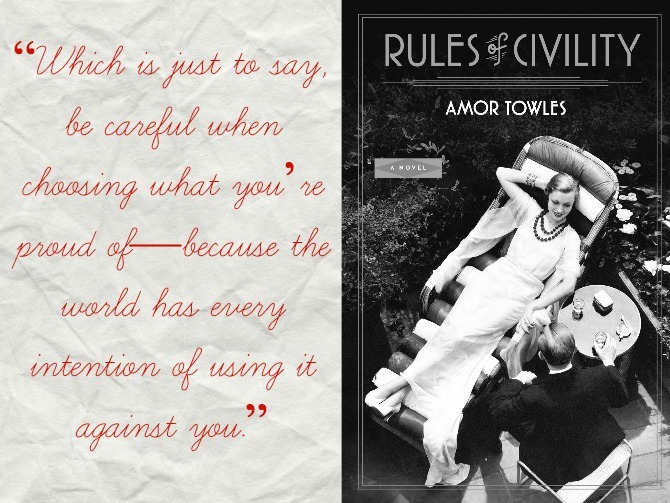
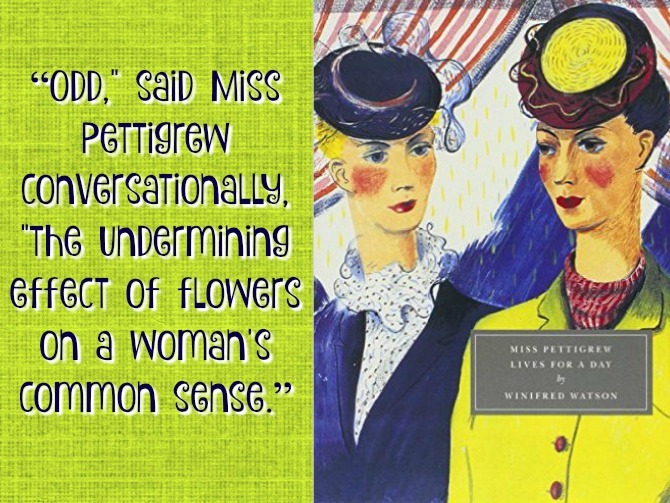
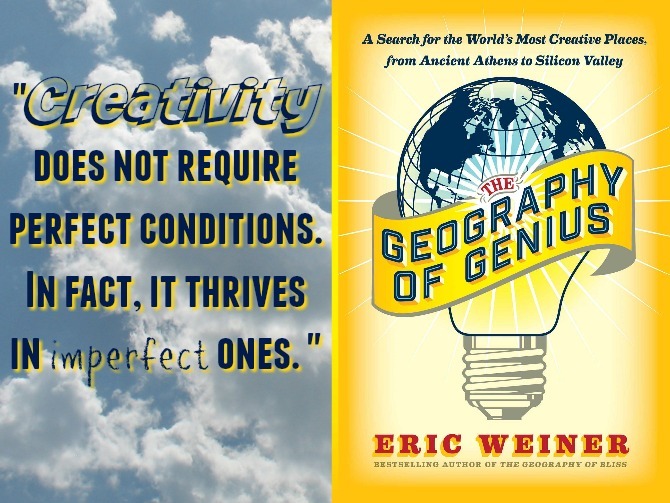
[…] Rules of Civility by Amor Towles (Review) […]
[…] The More of Less: Finding the Life You Want Under Everything You Own, by Joshua Becker: This book is the Christian version of The Life-Changing Magic of Tidying Up. The minimalist principles in this book are nothing new, but I appreciated Becker’s take on the subject, particularly his explanation of how living with less is an extension of his faith. (Original Review) […]
WOW, lots of great books! I read Real Marriage while going to Mars Hill, the church Mark Driscoll founded. We went through a chapter of the book each sunday and then dove deeper during our weekly community groups. I think hearing the Driscolls teach in person helped to see that it wasn’t (atleast from what I felt) misogynistic and was a good overall Biblical perspective to manhood, womanhood, and marriage in light of God’s principles. There were definitely things that rubbed me the wrong way too, but overall it really helped me work through some deep-seeded issues in regards to fear of marriage and past hurts.
I really want to read The Madwoman Upstairs but I want to read a Bronte book first so I have a bit more background knowledge about the sisters so it might make more sense than if I just jump in cold turkey (well, I’ve watched different versions of Jane Eyre, so I know a teensy bit).
Here are my September reads: https://elle-alice.blogspot.ca/2016/09/september-book-reviews.html
I really appreciate your perspective on Real Marriage. It’s interesting how much can be lost in translation, even just from word to paper; I loved most of what the Driscolls had to say so I’m glad that the misogynistic undertones I was sensing might just have been my own interpretation.
I would DEFINITELY recommend reading Jane Eyre before diving into The Madwoman Upstairs; not only will it help you enjoy the book at a deeper level, but Jane Eyre is a book deserving to be read!
I’m starting Rules of Civility this week on an airplane ride and I can’t wait! I have it saved for that 🙂 I loved How I Met your Mother so I will be thinking about that! It sounds like an amazing read.
I think I’m one of the only people who just couldn’t get into Miss Pettigrew Lives for A Day…but I might try it again sometime.
It took me a bit to get into Miss Pettigrew but it was totally worth sticking with it. I hope you love Rules of Civility as much as I did!
I really enjoyed The More of Less too! Really inspiring!!
The Rumor was fine, very readable but not memorable. Not my favorite of hers!
Great QuickLit!! Really enjoyed it. I really love the quotes. I have Joshua Becker’s book and need to read it, and have started Rules of Civility. Did you read these all on audio? Always looking for good audio books since it seems to be the only way I can get much reading in. I just read “The Boys in the Boat on mostly audio and it was great.
Thanks so much Sarah. I have a slight obsession with quotes so it’s fun for me to pull out favorites to use here. How are you liking Rules of Civility? I just started Gentleman of Moscow and it’s good but I think I liked Rules more. I read 4 of these books in print and the rest was audiobook. I generally prefer books that I have read, I think I feel more invested in them and therefore enjoy them more, but audiobooks allow me to get through so many more than I could otherwise. Joshua Becker’s book would tie in nicely with your current home series, and that one was great on audio! Becker reads it himself, which I think is so much nicer.